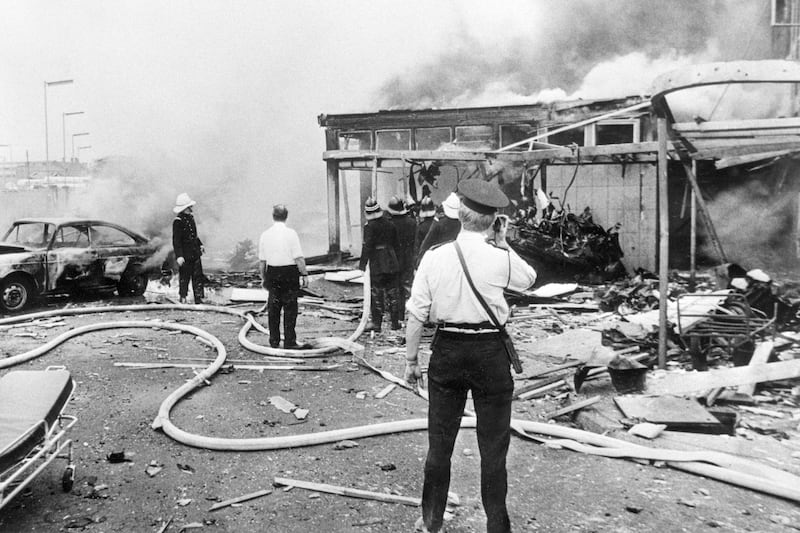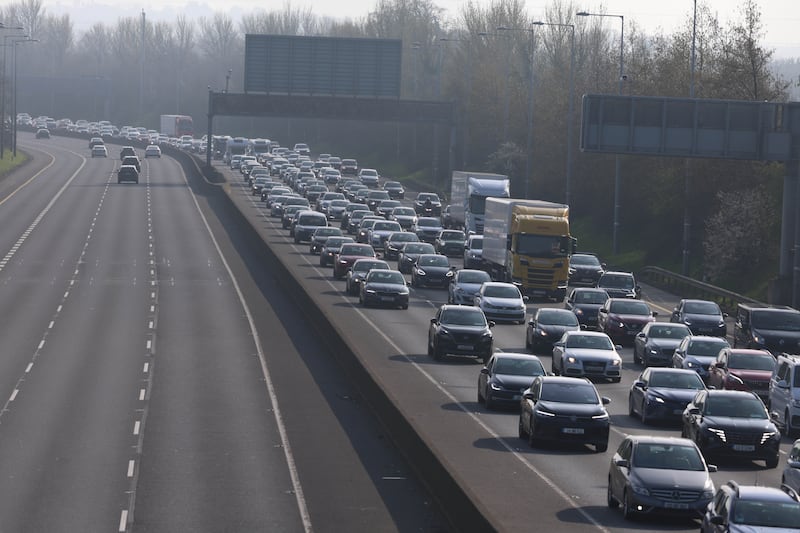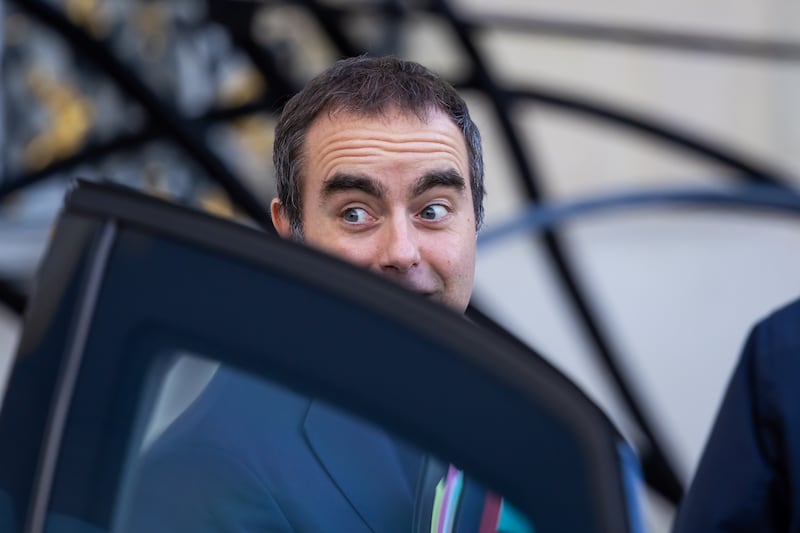In towns and cities across the country large colourful murals are increasingly being seen on the gable ends of houses and buildings and on hoardings. However, as more murals pop up some artists have questioned whether local authorities should be the gatekeepers of what works are erected.
“A lot of public art throughout the ages has been controversial, thought-provoking and unsettling, and we shouldn’t be afraid of that,” says Sinn Féin’s housing spokesman Eoin Ó Broin.
What Ireland needs, in his view, is a policy that promotes good quality art on its streets; art that is not commercial, “isn’t party politicised and isn’t discriminatory in its operations”. This is why Ó Broin says he has tabled legislation – the Public Art Mural (Exempted Development) Bill – that would create a new planning exemption for large public murals.
Under Ó Broin’s Bill, which was drafted alongside the artistic collective Subset, subject to the permission of the owner of a private building, alongside what are termed “reasonable conditions”, a mural would not require planning permission.
RM Block
Such conditions include that the public art is not a commercial or political advertisement, or a referendum campaign and not in conflict with equality acts.
Ó Broin was criticised last April for sharing a reworked image on social media which depicted gardaí overseeing an eviction.
Artist Adam Doyle, also known as “Spicebag”, altered a painting by renowned Cork artist Daniel MacDonald (1821-1853) of an eviction taking place during the Famine to instead show gardaí helping to remove tenants from the dwelling. The image was later painted as a mural on the side of a house in Arbour Hill on Dublin’s north side and was completed by artist Caoilfhionn Hanton over the space of two days.
The owner of the home, Jamie Goldrick, told The Irish Times at the time that permission had not been sought from Dublin City Council. When asked whether he was concerned the mural might have to bepainted over , Goldrick said “we’ll cross that bridge when we come to it”. The mural remained on the side of the house this week.
Ó Broin said he would be hopeful that the furore around his retweeting of the image would be seen as “something separate to the value of having a better planning policy and policy more generally in relation to public art”.
The Dublin Mid-West TD said it was important that policymakers and legislators “don’t set themselves up as arbiters of what is and isn’t appropriate public art”.
The Government said it has not yet decided a position in relation to the Public Art Mural Bill. “In advance of the Bill being taken at second stage in the Oireachtas a memo will be prepared for Government,” a spokesman at the Department for Housing said.
The spokesman said the Bill as currently drafted posed “a number of difficulties which would require further examination”.
The proposed legislation along with a wider discussion of murals and street art took place at a meeting of the Joint Oireachtas Committee on Tourism, Culture, Arts, Sport and Media last month, which is currently examining the development of local and community arts.
Siobhan Maher, from Dublin City Council’s planning and property development department, told the committee that murals require planning permission, which she said is usually an eight-week process, or artists can engage in a partnership with the local authority which is a “more straightforward and more agile process”.
Maher said around five planning permissions are sought annually by artists while there are between 40 and 65 applications for partnerships with the council, ranging from community groups, professional street artists to transition year teachers. She said the council was supportive of the art form and had brought forward a forum to meet with street artists to “see how we can work better together and to broker partnerships”.
Dublin City Council dropped a legal case against Subset last year, just days before proceedings were to begin, in relation to three murals in the capital: the Horseboy mural in Dublin 7, the Think & Wonder mural on the side of Granthams Cafe in Dublin 8; and a portrait of David Attenborough on the side of a house in Portobello.
Planning enforcement officers who examined each mural held they were not exempt from needing planning permission and as a result, Dublin City Council ordered their removal because permission was not obtained for the “unauthorised development”.
Subset has said it always receives permission from the relevant property owner in advance of painting, but not always from Dublin City Council. It said it does not believe current planning processes and procedures are a “suitable mechanism for the governance of the creation of public art, specifically murals”.
“The notion of the planning and enforcement departments playing a self-appointed curatorial role in public art is ludicrous to us, it fundamentally limits the creative expression of the artist community,” it said.
When asked whether Dublin City Council would welcome Ó Broin’s proposed legislation, Maher said she could not comment but the local authority would look at the Bill and make a submission. “There is a need to safeguard the built heritage, especially in a city that is Victorian and has a lot of Georgian heritage. There’s a lot of red brick and stone in the city, architectures and art form also, so there is a responsibility.”
Artist Joe Caslin’s mural of two young men hugging was installed at the corner of South Great George’s Street in Dublin in the weeks before the same-sex marriage referendum in 2015. Caslin said his understanding at the time was that he didn’t require planning approval under the Referendum Act but that Dublin City Council took “a different view” and was told he was potentially in breach of planning law.
The paper-based mural was damaged due to rainfall and was subsequently removed by Caslin 19 days after it had gone up.
“Art work should be able to comment on the feelings and thoughts within a community, and to have a local authority being the gatekeepers of art work, the only gatekeepers of creating work, I don’t know is it beneficial for a progressive society,” he said.
Caslin, who has worked on murals both North and South, said every local authority’s planning processes “differ in some way”, and certain councils have better relationships with artists than others. In terms of partnerships with a local authority, he said such works are generally to “amplify a specific place”.
“Hard topics are often avoided and when they are chosen, the edges are really rounded off,” he said. “Yes, it allows quality control, but the artists’ voices are restricted. I would be very wary. There is talk that if a street art work becomes a piece of advertisement that’s telling you how to think and how to act. So too if the only player in the room is the council, well then you have to act in a very particular way. If that council is quite restrictive, or left wing or right wing, you have to create work that is in that manner.”
Dublin City councillor Mannix Flynn has defended the local authority’s approach and said the city had “a workable process” for murals and that artists could not “circumnavigate the law”.
“Just because in Dublin City Council you can’t just go out there and actually paint the place and put a mural on a place without consent, I think that’s proper order, I really do. I don’t know anybody in Dublin City Council who is against good street art or good artistic expression and won’t assist that in any given instance.”
In Co Waterford its Walls Project, which commissions large murals across the city and county, has developed into an annual international street art festival. John O’Connell, executive director of the Walls Project, said it had “quite a happy set-up” with Waterford City and County Council.
“We have a process of planning consent whereby we are producing 30 to 40 walls each year in Waterford city. Obviously if we had to go through planning permission for something like that, it would make the work impossible, basically,” he said. “We have a process set up with the council where they see sketches in advance. The wall owners give their consent and there is a memorandum of understanding between ourselves and the council. It has worked very well to date.”
Speaking at the Oireachtas Committee, Fianna Fáil Senator Malcolm Byrne questioned what balance needed to be struck in terms of murals and allowing for those with “very different political views”.
“What if somebody who does not describe themselves as pro-choice decided to exhibit a pro-life piece of art and it may be quite graphic,” he said. “Or somebody with very strong right-wing views might decide to exhibit in a particular way…this is always a balance that we’ve got to get between freedom of expression and also there has to be a caution.”
Noel Kelly, chief executive officer of Visual Artists Ireland, noted that artistic freedom is “not for one set of beliefs”.
“We have a problem in Ireland of a social media bubble that we need to address if we are going to talk about true artistic freedom…Equitable opportunity for different thoughts, different systems of belief, we have to get comfortable as a society of how do we feel about this freedom of expression,” he said.
Caslin said any mural erected should consider equality and forthcoming hate speech legislation.
“There is a huge amount of public art work that is created. There is very little, I can’t even think of any art work that has hurt me,” he said. “There is a difference between something being harmful and something being controversial. In my experience the artists and the art work that is created within the space is very respectful.”
Caslin also pointed out that street art has come up on the Leaving Certificate art examination on five separate occasions since first appearing in 2017.
“The young people who study art in our schools, thousands each year, are being shown the value of street art, taught to understand the process and appreciate it as a platform for social commentary and awareness. To celebrate this medium only in theory, in an academic context, while tacitly discouraging contributions to the art form via the current legislation is hypocritical…I would welcome legislation that facilitates artists to work with more freedom and less fear of legal retaliation.
“Authentic expression leads to cultural impact, and without the ability for artists to express themselves without fear of reprisal, the culture of the arts in Ireland will stagnate and suffer.”






















